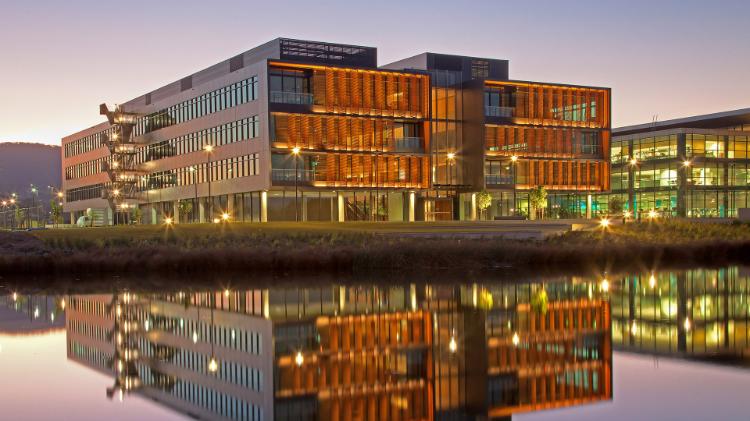University Of Wollongong’s Cancer Centre Receives $700k Commercialisation Grant
An invention developed at the University of Wollongong’s (UOW) Centre for Medical Radiation Physics (CMRP) has been granted $698K by the Australian Government Accelerating Commercialisation program.
MOSkin, a small, disposable tool that precisely measures radiation dose and dose rate on the skin of patients receiving cancer treatment, was developed by Distinguished Professor Anatoly Rozenfeld and will go to market through a partnership with Electrogenics Labs, who will manufacture the device.
MOSkin is a radiation detector device developed at CMRP for accurate dosimetry of cancer patients treated with radiation therapy.
Professor Rozenfeld explained: “It is important to avoid error in radiation doses which can lead to overdosing of patients and seriously affect quality of life of or underdosing leading to poorer cancer outcomes.”
MOSkin is a small, adhesive panel, similar to a sticker or a label that, when placed on the skin at the site of radiotherapy treatment, can accurately measure the amount of radiation the skin receives and hence reduce the potential for unwanted side effects, such as skin burns and damage to surrounding tissues.
“More than 50 per cent of patients who receive a cancer diagnosis will be treated with radiotherapy and yet until this device was developed, there was no accurate way to measure skin dosage at the site of treatment during or immediately after treatment.
“This device not only assures better dosimetry, it helps limit damage to the skin, to the body’s largest critical organ,” Professor Rozenfeld said.
Simultaneous to the scale-up of production of the device, the Therapeutic Goods Administration approved clinical trials of the prototype of the product, which were conducted with men with prostate cancer at St George and Newcastle hospitals. Internationally, MOSkin was tested on people with prostate and gynaecological cancers at the National Cancer Centre of Milan and the University Malaya Cancer Centre in Kuala Lumpur.
“MOSkin can immediately measure the dosage on the patient’s skin, eliminating any delay in results to verify the treatment. This will reduce the amount of time each patient must stay in the hospital. The product is disposable, which is important for infection control in hospitals.”
“Innovation is not a one-day thing – this advance has been the result of coordinated efforts over many years and commitment from partners including Electrogenics Labs and the UOW Research Commercialisation team,” Professor Rozenfeld said.
Electrogenics Labs CEO Geoff Neilson said the grant will allow the company to accelerate the commercial development of MOSkin.
“The grant has already enabled us to undertake important market research to identify key product features and target markets, and will accelerate the development of the final product.”
“We greatly appreciate the invaluable relationship and support received from Professor Rozenfeld and his team at UOW in helping us understand the business opportunity and to answer the multitude of technical questions we have had during the process.”
“The collaboration between Electrogenics Laboratories and the CMRP at UOW is a great example of how university-industry partnerships should work resulting in a win/win outcome.”
UOW Deputy Vice-Chancellor (Research and Sustainable Futures) Professor David Currow said: “Electrogenics is a perfect example of UOW’s commitment to realising the inherent value of its scientific research by partnering with innovative companies. These partners not only drive our discoveries towards commercial fruition, but also bring ideas and research funding back to UOW to drive a virtuous cycle of innovation that benefits our community immensely.”
UOW is committed to addressing the United Nations Sustainable Development Goals (UN SDGs), which provide a shared blueprint to achieve a better and more sustainable future for everyone. The MOSkin project addresses UN SDG 3 (Good Health and Wellbeing).

